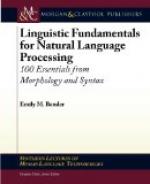Proper nouns admit of the plural number; as, there are sixty-four John Smiths in New-York, twenty Arnolds in Providence, and fifteen Davises in Boston. As we are not accustomed to form the plurals of proper names there is not that ease and harmony in the first use of them that we have found in those with which we are more familiar; especially those we have rarely heard pronounced. Habit surmounts the greatest obstacles and makes things the most harsh and unpleasant appear soft and agreeable.
Gender is applied to the distinction of the sexes. There are two—masculine and feminine. The former is applied to males, the latter to females. Those words which belong to neither gender, have been called neuter, that is, no gender. But it is hardly necessary to perplex the minds of learners with negatives. Let them distinguish between masculine and feminine genders, and little need be said to them about a neuter.
There are some nouns of both genders, as student, writer, pupil, person, citizen, resident. Poet, author, editor, and some other words, have of late been applied to females, instead of poet_ess_, author_ess_, edit_ress_. Fashion will soon preclude the necessity of this former distinction.
Some languages determine their genders by the form of the endings of their nouns, and what is thus made masculine in Rome, may be feminine in France. It is owing, no doubt, to this practice, in other nations, that we have attached the idea of gender to inanimate things; as, “the sun, he shines majestically;” while of the moon, it is said, “she sheds a milder radiance.” But we can not coincide with the reason assigned by Mr. Murray, for this distinction. His notion is not valid. It does not correspond with facts. While in the south of Europe the sun is called masculine and the moon feminine, the northern nations invariably reverse the distinction, particularly the dialects of the Scandinavian. It was so in our own language in the time of Shakspeare. He calls the sun a “fair wench.”
By figures of rhetoric, genders may be attached to inanimate matter. Where things are personified, we usually speak of them as masculine and feminine; but this practice depends on fancy, and not on any fixed rules. There is, in truth, but two genders, and those confined to animals. When we break these rules, and follow the undirected wanderings of fancy, we can form no rules to regulate our words. We may have as many fanciful ones as we please, but they will not apply in common practice. For example: poets and artists have usually attached female loveliness to angels, and placed them in the feminine gender. But they are invariably used in the masculine thro out the scriptures.




